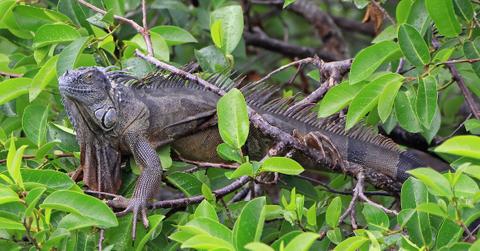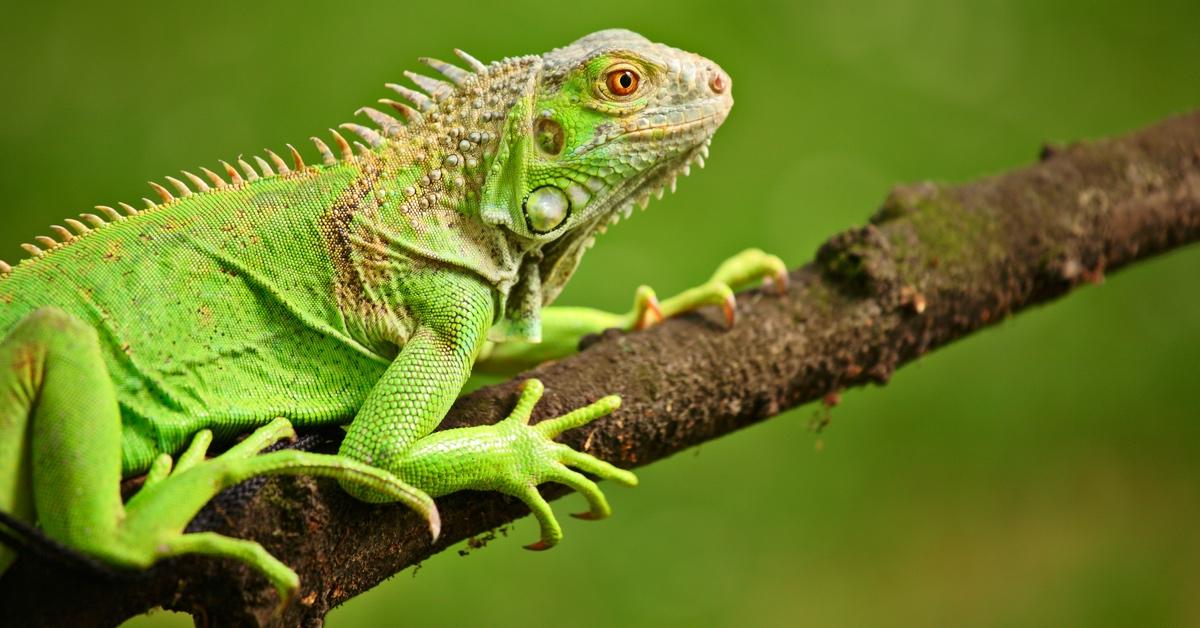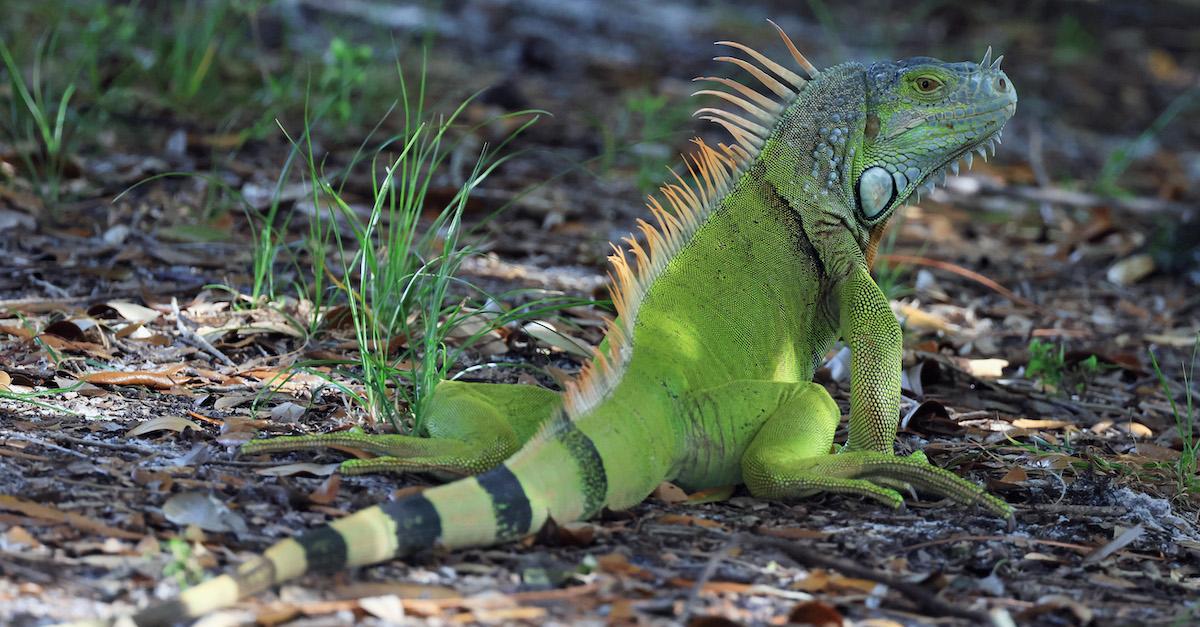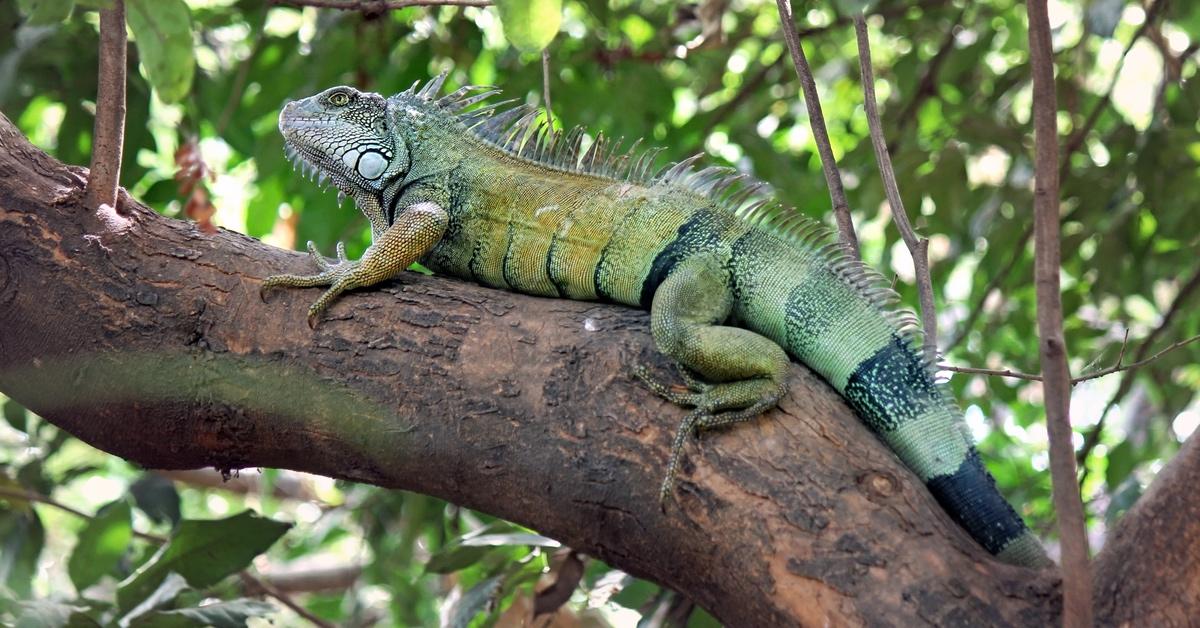Hoards of Iguanas Will Be Tumbling From Southern Florida Trees — Here’s Why
Updated Jan. 24 2024, 9:38 a.m. ET

Picture this: it's a clear day, a little cold, but then, out of nowhere, BAM! An iguana falls to the ground at your feet.
If you think this phenomenon sounds too far fetched, unfortunately, it's a seasonal occurrence in Florida. Yes, you heard that correctly, it happens every year, but it never fails to surprise both locals and visitors alike.
But why do iguanas even fall from trees? These poor frozen creatures aren't dead, just temporarily paralyzed with cold. Keep reading for more on this natural phenomenon, explained.

Why do iguanas fall out of trees?
Iguanas are an invasive species in Florida, which unfortunately makes them more susceptible to the cold weather in the area, says the Florida Fish and Wildlife Service.
According to FOX 13 News, when temperatures in Florida drop around 40 degrees Fahrenheit, these cold-blooded creatures become "cold stunned" and fall out of trees. That's not to say the iguanas are in any danger! Just calmly move around them and they will eventually warm back up again.
However, male iguanas in particular can grow to nearly 5 feet long and can weigh up to 20 pounds, warns FOX 13 News, so passersby should be careful when iguanas might be overhead.
On social media, the hashtags #fallingiguana or #fallingiguanawarning have taken over, with plenty of videos showing residents and tourists alike witnessing lizards seemingly dropping from the sky.

Chief meteorologist at Wink News in Florida, Matt Devitt, explained to The BBC that while extreme temperatures are on the rise because of climate change, the reason Floridians and tourists might be hearing more about falling iguanas lately is because of the surge in iguana populations.
"The iguanas were brought over from Central and South America in the 1960s and '70s, but the population was limited then," Devitt stated. "They’ve exploded in population over the past decade, which is why people are starting to notice what the cold does to them."
However, with an influx of higher-heat temperatures as a direct result of the climate crisis, there is a chance that there will be less falling iguanas soon. "This happens about once or twice a year for us. But with fewer cold episodes in the decades ahead due to global warming, the frequency of falling iguanas would decrease, as well," Devitt added.

Iguanas aren't the only creatures that experience this phenomenon.
Although they don't fall out of trees, sea turtles also experience cold-stunning. According to the National Oceanic and Atmospheric Administration (NOAA), when water temperatures are below roughly 50 degrees Fahrenheit, sea turtles can experience cold-stunning, which makes them unable to swim.
Sometimes in these instances the turtles wash ashore, and if the temperatures do not go back up, can even lead to turtles dying. However, there are many wildlife networks across the U.S. that are aware of this problem and on the alert when the temperatures drop to ensure sea turtles survive the winter months.
This article, originally published on Dec. 20, 2022, has been updated.